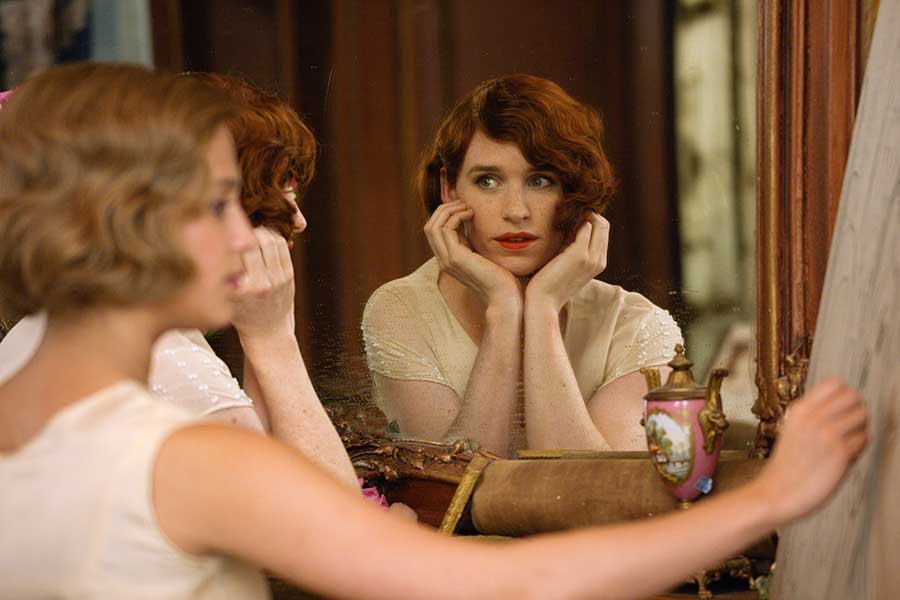The handsome biopic “The Danish Girl,” opening Dec. 11 at Ritz Theatres, chronicles the life of Lili Elbe, one of the first transgender women to undergo sex-reassignment surgery.
The film, directed by Tom Hooper, is gorgeously lensed; the lighting makes every scene look like it could be a painting. The costumes, fabrics and period details are exquisite. And the acting, by newly minted Oscar winner Eddie Redmayne as Einer Wegener/Lili Elbe and Alicia Vikander, especially, as wife Gerda, is excellent. But this polite drama spoonfeeds the audience the psychology of the characters — it is as much Gerda’s story as it is Lili’s — which makes it oddly impassive. That said, when Hooper wants audiences to feel something, he simply has Alexandre Desplat’s music swell on the soundtrack.
“The Danish Girl” opens with Einer Wegener having a successful career as an artist in 1926 Copenhagen. His wife, Gerda, is struggling as a painter, and when she asks Einer to help her by posing in stockings, he is as taken with the sheer fabric as he is with Gerda’s lace undergarment, and her red lipstick. Their friend Ulla (bisexual actor Amber Heard) catches Einer modeling and dubs him Lili. He soon takes the name as his female persona.
Einer is not interested in cross-dressing to “become” Lili, even if he does wear female clothes under his male attire. The film makes this point clear, albeit repeatedly. Einer, with Gerda’s help, learns how to walk and move in a feminine fashion, studying movement from a woman at an open-air market in Copenhagen, or a nude dancer in a peep show in Paris. When Lili goes out in public to a ball, she attracts the attention of the gay Henrik (out actor Ben Whishaw), who kisses her. Gerda catches her husband at this indiscreet moment, which prompts her and Einer to re-evaluate this game of dress-up.
Yet Einer knows it is no game, and tells Gerda that something has changed in him. Soon, he is sneaking off to tuck his penis while posing naked before a mirror. He also confesses a kiss he once shared with childhood friend Hans (Matthias Schoenaerts). Encouraged to see a doctor, Einer is treated with radiation therapy for his “aberrant thinking” and “insane” behavior.
“The Danish Girl” shows what the early attitudes by medical professionals were towards transgender people. Lili, over time, seeks help from several doctors, and many of them diagnose her to be schizophrenic, or otherwise “deviant.” However, when she meets Dr. Warnekros (Sebastian Koch), he offers Lili a sex change, a risky operation at the time. The film carefully depicts the psychological factors involved, and the mental (and physical) preparations that need to be undertaken for the irreversible procedure.
While these points are made in a refined manner, the whole film feels, well, rather clinical. There is a scene where two men beat up the androgynous Lili in a park to show how “her kind” is not accepted. There is a delicate scarf traded back and forth between Gerda and Lili that acts as a heavy-handed symbol. And there are didactic moments when Lili explains it “doesn’t matter what I wear … I dream Lili’s dreams,” and that she sees Dr. Warnekros’ surgery as a way of “correcting a mistake of nature.” The important moments do not feel false, but they do feel unimpassioned.
Hooper seems so intent on not being sensationalistic — or at least inclined not to offend — that he fails to make Lili’s story as interesting or as engaging as Gerda’s. That Einer’s wife, who experiences frustration, jealousy, even desire, stands by Lili throughout her transformation is the heart of this love story. Vikander conveys this through her exceptional performance, making her character perhaps more sympathetic than Einer/Lily. When Gerda sheds a tear after Lili discloses that she has been seeing Henrik, it is a moving moment. Likewise, it is powerful when Gerda cries out to Lili, “Can you get my husband?” She is aching for the life she once had and hopes in some way to recover. Even Gerda’s meetings with Hans are fraught with little tensions, sexual and otherwise.
But “The Danish Girl” does not have enough of these affecting scenes to generate anything other than an appreciation for this safe, classy piece of Oscar-bait. Perhaps screenwriter Lucinda Coxon, in adapting David Ebershoff’s novel, should have told the story from either Einer/Lili’s perspective, or just Gerda’s, to give the film some dramatic momentum.
That said, Redmayne does a very credible job of bringing Lili to life and trying to pass as a woman. His delicate features are certainly suited to the role, and he never displays a showiness. In support, both Whishaw and Schoenaerts acquit themselves well in their key roles.
Ultimately, “The Danish Girl” is lovely to look at, even if it feels superficial.

